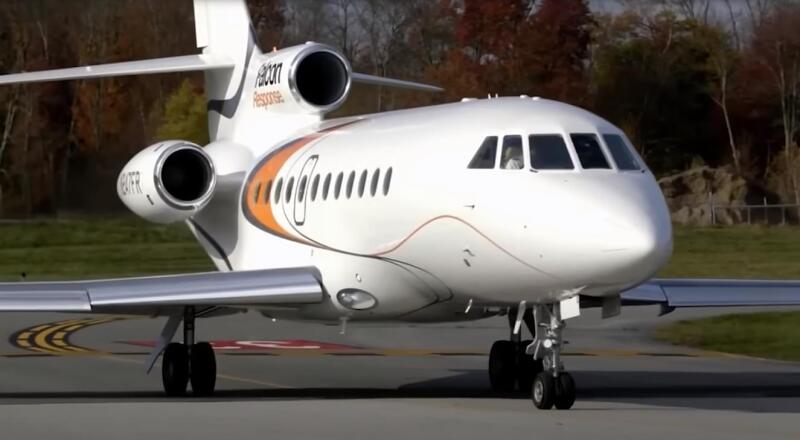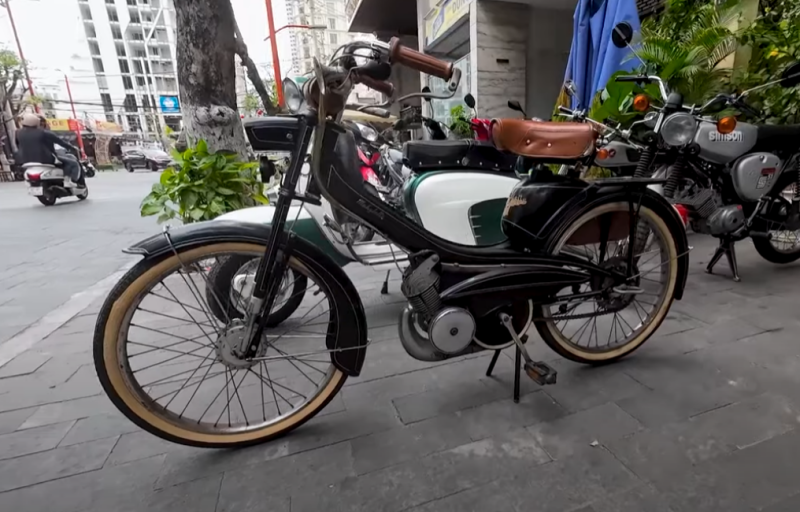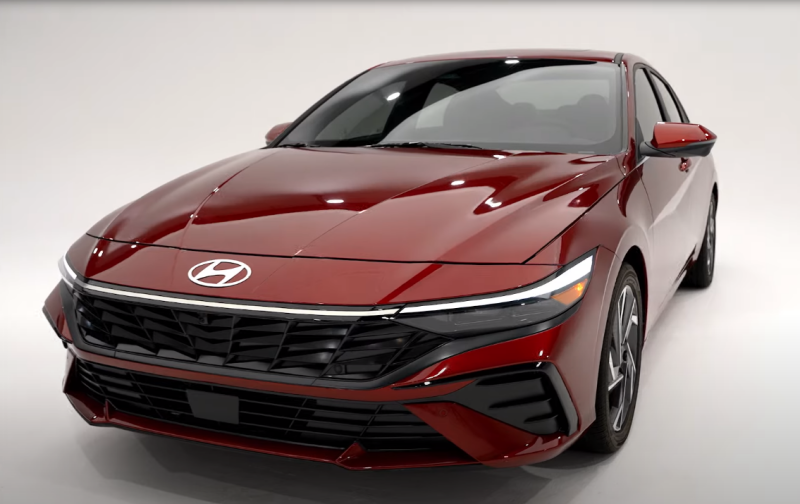Layout
During the construction of the machine, the aerodynamic scheme, traditional for such aircraft, was used. In front of the semi-monocoque fuselage, the power unit is located, then (near the center of gravity) there is a fiberglass tank for chemicals (pressurized) and a pilot's cabin. For the manufacture of a front-mounted frame, a “stainless steel” half a millimeter thick was used.
 The plane is single. Photo: YouTube.com
The plane is single. Photo: YouTube.comThe sheet is a fireproof partition. By design, "Farmer-2" is a low-wing wing with struts (made from profile 30 HGSA), equipped with a pull-type propeller and pyramid-shaped main landing gear. Behind the tail - a spring. Fuel tanks with a total capacity of 82 liters are located in the inner compartments of the wings - caissons.
Cabin
It is located just behind the compartment with a chemical fiberglass tank. The cockpit is quite spacious, in front of the pilot there is a panel with round instruments and a display in the center. There is a radio station. At the rear of the lantern there is an air intake with a filter for cleaning air flows.
Power unit
It is impossible to list all models of light aircraft on which the popular Lycoming IO-360 aircraft engine has been installed and is being installed. Its reliability and economy deserve respect for the manufacturer.
In 2004, they wanted to install the LOM PRAHA M-1C power unit, which produces 332 “horses”, on the predecessor of the described Farmer-170 model, but later this idea was abandoned.
There are many modifications of the unit: the one that is equipped with "Farmer-2" develops 180 "horses". Other technical parameters of the aircraft:
✅ wingspan, length, height - 10,4, 7,15 and 2,2 m
✅ empty weight and maximum takeoff - 606 and 1100 kg
✅ average and highest speed - 160 and 200 km / h
✅ mass of chemicals - 295 kg
The aircraft is operated by one pilot. Permissible operational load - no more than four units. A compacted dirt track is enough for takeoff and landing.
 The plane takes off from the outskirts of the field. Photo: YouTube.com
The plane takes off from the outskirts of the field. Photo: YouTube.comThe first maintenance of the machine will be required after 50 hours of operation, then every 100 hours. The total operational life is determined by the manufacturer at 3 thousand flight hours and (and) 6 thousand landings over eight years.
Equipment for AHR
Spraying of crops occurs at a speed of 125-145 km/h at a height of 3-6 meters. As agrospecialists say, the use of a small "chemical" aircraft is beneficial for the economy. A single car consumes 40 l/h of fuel (32 l/h in driving mode). For example, in An-2 this figure is four times higher. Equipment for ultra-low-volume (up to 10 l/ha) spraying is made in Italy. These are various filters, fittings, nozzles, etc. Electric pumps for 24 V were supplied by Ukraine.
 Spray nozzles - Italian. Photo: YouTube.com
Spray nozzles - Italian. Photo: YouTube.comThe productivity of "Farmer-2" is in the range from 90 to 320 hectares per hour. During the tests, it turned out that in one working day "Farmer-2" can process 1800 hectares (with a chemical consumption of 7 l / ha), and if the rate is 3 l / ha, then it will be 2800 l / ha! The use of the navigation system is interesting: it is not needed for the pilot to find his "airfield" - GPS is used in terms of preventing accidental re-treatment of an already sprayed field.
 Field processing is carried out at low altitude. Photo: YouTube.com
Field processing is carried out at low altitude. Photo: YouTube.comIn addition, a modest-sized aircraft is easier and faster to turn around at the ends of the land. The use of ground-based agricultural machinery with high ground clearance for chemical processing is cheaper (and depending on which manufacturer it is from), but, firstly, it takes more time, and secondly, the plants are still damaged, no matter how carefully the machine operator drives. The requirements for a field spraying pilot are minimal: you must have a license to perform aerial chemical work.
Test
The plane was checked throughout Russia (Kuban, Far East, Tatarstan) and in Kazakhstan. Particular attention in the development of the machine is given to safety. To protect the pilot from harmful fumes, carbon filters were installed in the pressurized cabin.
 This red pen is the only chance to save the pilot. Photo: YouTube.com
This red pen is the only chance to save the pilot. Photo: YouTube.comIn case of emergencies, the pilot can use the instantaneous parachute rescue system (located behind the back of the seat).
 Rescue system MVEN in action (glider falls). Photo: YouTube.com
Rescue system MVEN in action (glider falls). Photo: YouTube.comBy the way, its development and production is a specialization of the same company from Kazan.
Where and how the aircraft is made
For serial production of "Farmer-2" in Kazakhstan, a small plant was specially built, and in a year. The construction of the machines began in 2011. The body of the aircraft is completely made of composite material. How does this happen? At the plant in Karaganda (one of the leaders of MVEN comes from there) there is a whole team of specialists for gluing polymer parts. At first, work was slow: one plane took about four months. Later, the process accelerated by 4 times or more. When reaching the nominal production capacity, three vessels were produced every month. According to the management of KazAviaSpektra, which owns an enterprise in Karaganda, it can increase the production of Farmer-2 to 100 vehicles per year.
 The appearance of an aircraft at exhibitions invariably arouses interest. Photo: YouTube.com
The appearance of an aircraft at exhibitions invariably arouses interest. Photo: YouTube.comHowever, the slow pace is not surprising: the process of gluing the wings and fuselage is actually manual. First, a piece of fabric is taken and placed in a mold, which is filled with epoxy. The part is then dried, pressed and ground. Of interest is the next stage - the reinforcement of the resulting fiberglass. Styrofoam is used for this, oddly enough. Contrary to physical laws, it increases the strength of the part if it is placed between two pieces of fiberglass. The rigidity of the resulting element is comparable to steel. This technology has been widely used in the world for 20 years. This makes it possible to reduce the weight of the aircraft, increase efficiency without reducing its strength. In addition, you can forget about corrosion.
Joint productions abroad
And where else did they plan to organize the release of "Farmer-2" and subsequent models? In 2011, it was planned to open an aircraft assembly plant on the basis of Odessaaviaremservice, but for obvious reasons, the project remained on paper.
 Successor "Farmer-2"
Successor "Farmer-2" T-500 being prepared for loading. Photo: YouTube.com
Another enterprise, together with the Portuguese company Aeronavtika, was opened in the city of Ponti di Sor, which already has its own modest aircraft production. Units for screwdriver assembly will be supplied there.
The cost of "Farmer-2"
On the world market of light aircraft, the price of an aircraft developed in Russia that performs AChR is approximately two times lower compared to foreign “classmates”. "Farmer-2" was estimated in 2012 at 150 thousand dollars. Its more "advanced" modification "MVEN-500" (T-500) - 200 thousand "green".










